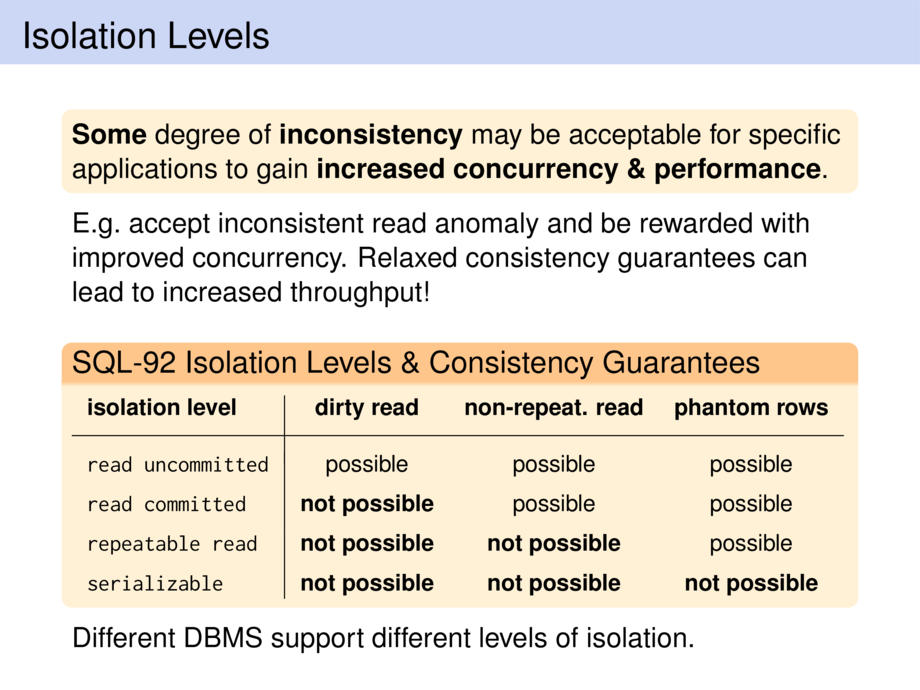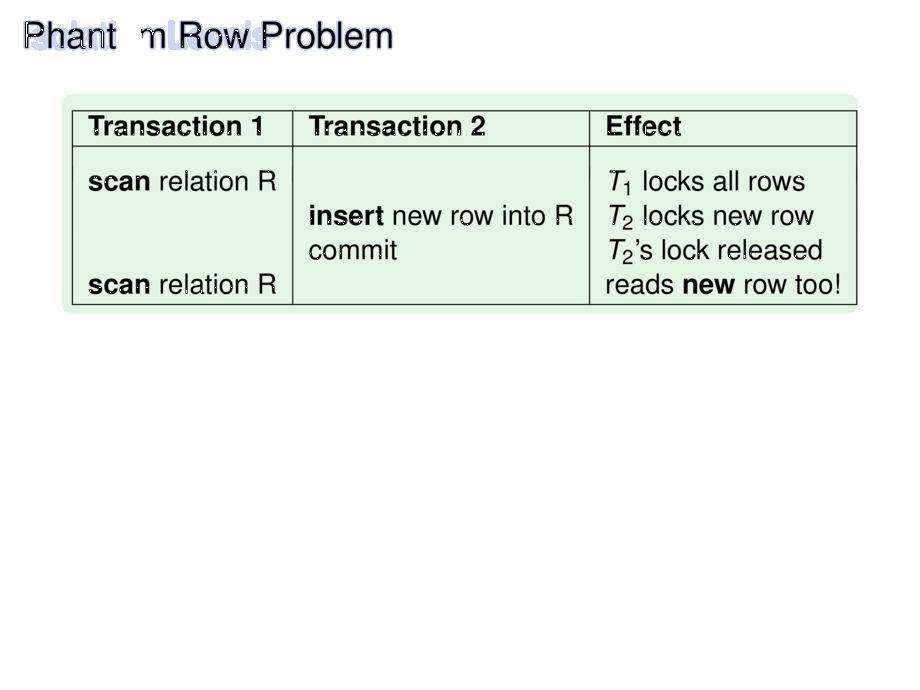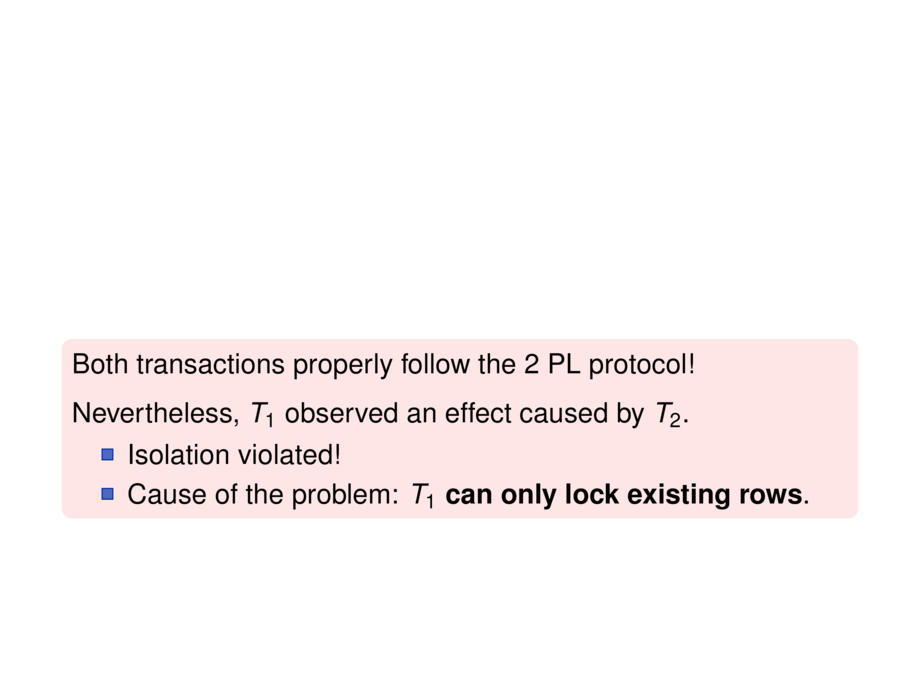



































































































173/212
\begin{frame}
\frametitle{Phantom Row Problem}
\begin{exampleblock}{}
\begin{tcenter}
\begin{tabular}{|l|l|l|}
\hline
\emph{Transaction 1} & \emph{Transaction 2} & \emph{Effect} \\
\hline
& & \\[-1ex]
\emph{scan} relation R & & $T_1$ locks all rows\\
& \emph{insert} new row into R & $T_2$ locks new row\\
& commit & $T_2$'s lock released\\
\emph{scan} relation R & & reads \emph{new} row too!\\
\hline
\end{tabular}
\end{tcenter}
\end{exampleblock}
\pause
\begin{alertblock}{}
Both transactions properly follow the 2 PL protocol!
\\[1ex]
Nevertheless, $T_1$ observed an effect caused by $T_2$.
\begin{itemize}
\item Isolation violated!
\item Cause of the problem: \emph{$T_1$ can only lock existing rows}.
\end{itemize}
\end{alertblock}
\pause
\begin{goal}{Solutions}
\begin{enumerate}
\item \emph{multi-granularity locking} (locking the table)
\item \emph{declarative locking}: key-range or predicate locking
\end{enumerate}
\end{goal}
\end{frame}

